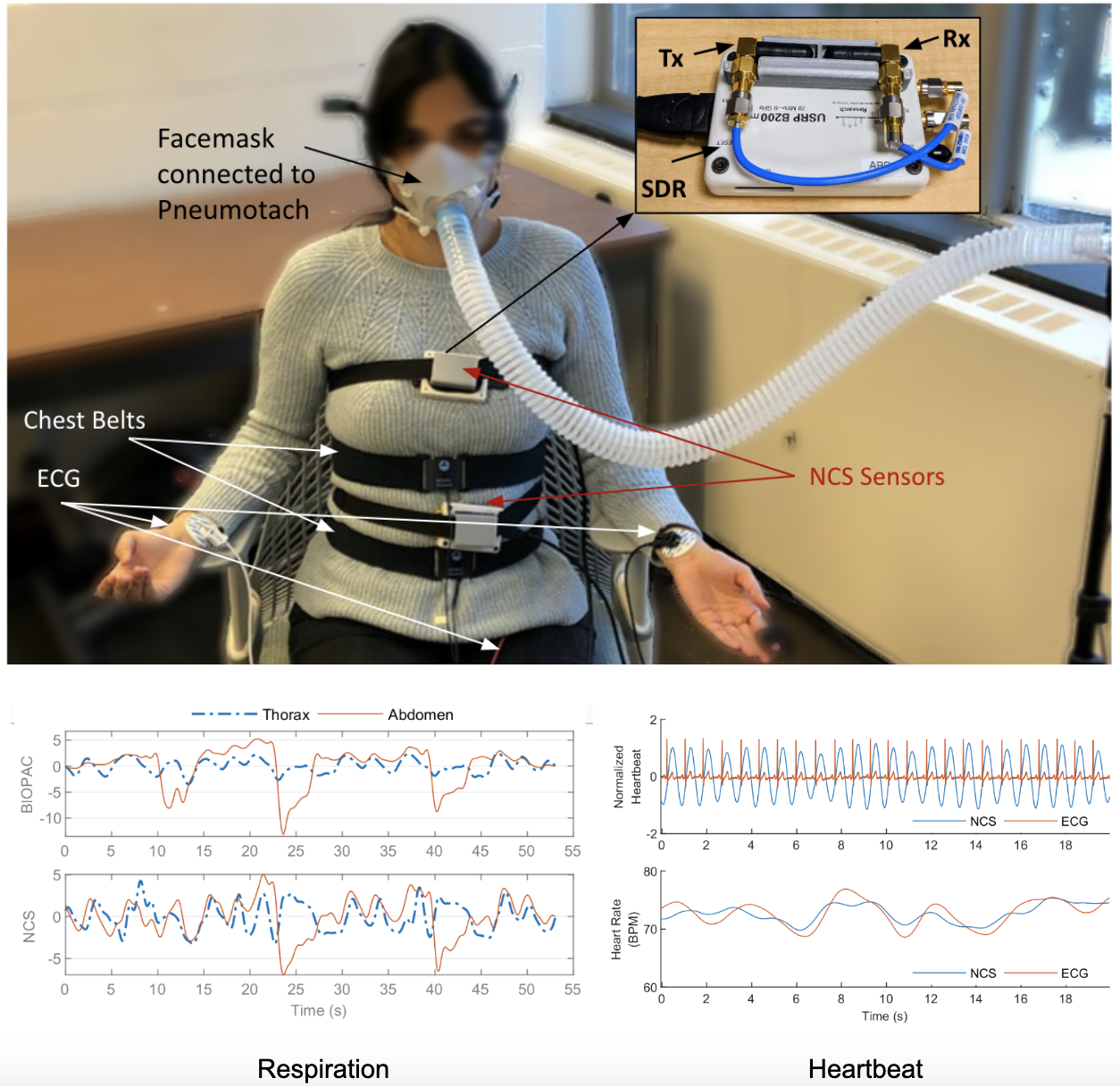Respiratory Pattern Monitoring with RF Near-Field Coherent Sensing (NCS)
Cornell University, Graduate Research Assistant
2016-2020
This project demonstrates a research prototype of a potentially low-cost wearable RF sensor for monitoring heartbeat and respiratory patterns and detecting central and obstructive sleep apneas.

Project details and code can be found here: RF Vital Sensing
- Designed and implemented a testing protocol to perform an IRB approved human study (N = 30) on simulated breathing disorders including apnea and stress/attention.
- Developed a real-time over-clothing cardiopulmonary sensor using a software-defined radio to collect detailed respiratory and heartbeat waveforms.
- Implemented a nearly tuning-free peak-detection algorithm to identify respiratory disorder with a broad frequency range of 2-40 breaths per minute (BPM), which achieved a high rate accuracy of 94.8% (RMSE: 2.9 BPM) and respiratory volume accuracy of 77.5% (RMSE: 0.11 L) under simulated deep, fast and central sleep apnea conditions.
- Designed a semi-supervised support-vector machine (SVM) outlier classification algorithm to detect motion artifacts with an accuracy of 91%.
- Designed and implemented a bed-integrated sensor for sleep apnea detection in collaboration with Cornell Weill Medical Sleep Center. The sensor is invisible to the user with improved antenna design and placement to measure separate thorax and abdomen motion.
- Programmed an attention detection test protocol (Mackworth Clock Task) on PsyToolkit for the 30-subject human study to evaluate attention/vigilance using respiratory and heartbeat characteristics from the RF-NCS sensor.
